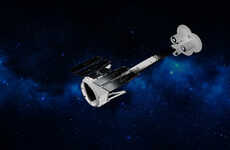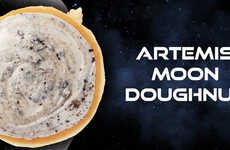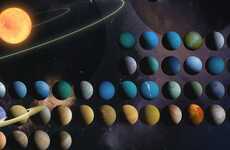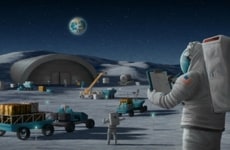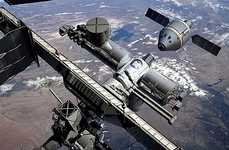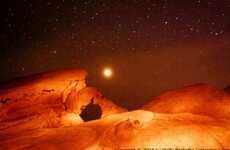
Vesta And Ceres
Rose A. Valenta — November 4, 2007 — Unique
References: nasa.gov
After its successful launch in September, NASA reports that DAWN II is on target for its 10-year mission. Research will include the exploration of the asteroid Vesta and dwarf planet Ceres, which scientists believe were formed early in our solar system's history.
"During its nearly decade-long mission, the Dawn mission will study the asteroid Vesta and dwarf planet Ceres, celestial bodies believed to have accreted early in the history of the solar system. The mission will characterize the early solar system and the processes that dominated its formation.
During the earliest epochs of our solar system, the materials in the solar nebula varied with their distance from the sun. As this distance increased, the temperature dropped, with terrestrial bodies forming closer to the sun, and icy bodies forming farther away."
Implications - The possibility of there being more to learn about in outer space is thrilling to today's desensitized consumer, making discover a large area of interest for all.
"During its nearly decade-long mission, the Dawn mission will study the asteroid Vesta and dwarf planet Ceres, celestial bodies believed to have accreted early in the history of the solar system. The mission will characterize the early solar system and the processes that dominated its formation.
During the earliest epochs of our solar system, the materials in the solar nebula varied with their distance from the sun. As this distance increased, the temperature dropped, with terrestrial bodies forming closer to the sun, and icy bodies forming farther away."
Implications - The possibility of there being more to learn about in outer space is thrilling to today's desensitized consumer, making discover a large area of interest for all.
Trend Themes
1. Deep Space Exploration - The Dawn II mission to study Vesta and Ceres highlights the growing trend of deep space exploration, offering opportunities for disruptive innovation in spacecraft design, propulsion technologies, and scientific instruments.
2. Solar System Formation - The Dawn II mission seeks to characterize the early solar system and the processes that dominated its formation, creating opportunities for disruptive innovation in planetary science, geology, and geochemistry.
3. Astrobiology - The exploration of Vesta and Ceres by the Dawn II mission may provide insights into the possibility of life beyond Earth, presenting opportunities for disruptive innovation in astrobiology, astrochemistry, and exoplanet science.
Industry Implications
1. Spacecraft Manufacturing - Deep space exploration activities such as the Dawn II mission require advanced spacecraft manufacturing capabilities, offering opportunities for disruptive innovation in robotics, 3D printing, and automation technologies.
2. Remote Sensing - The Dawn II mission employs advanced remote sensing techniques to study the surface and composition of Vesta and Ceres, creating opportunities for disruptive innovation in optics, imaging sensors, and data analysis algorithms.
3. Space Tourism - The growing interest in space exploration and the possibility of discovering new worlds may lead to opportunities for disruptive innovation in space tourism, such as suborbital flights, space hotels, and lunar expeditions.
5.2
Score
Popularity
Activity
Freshness

